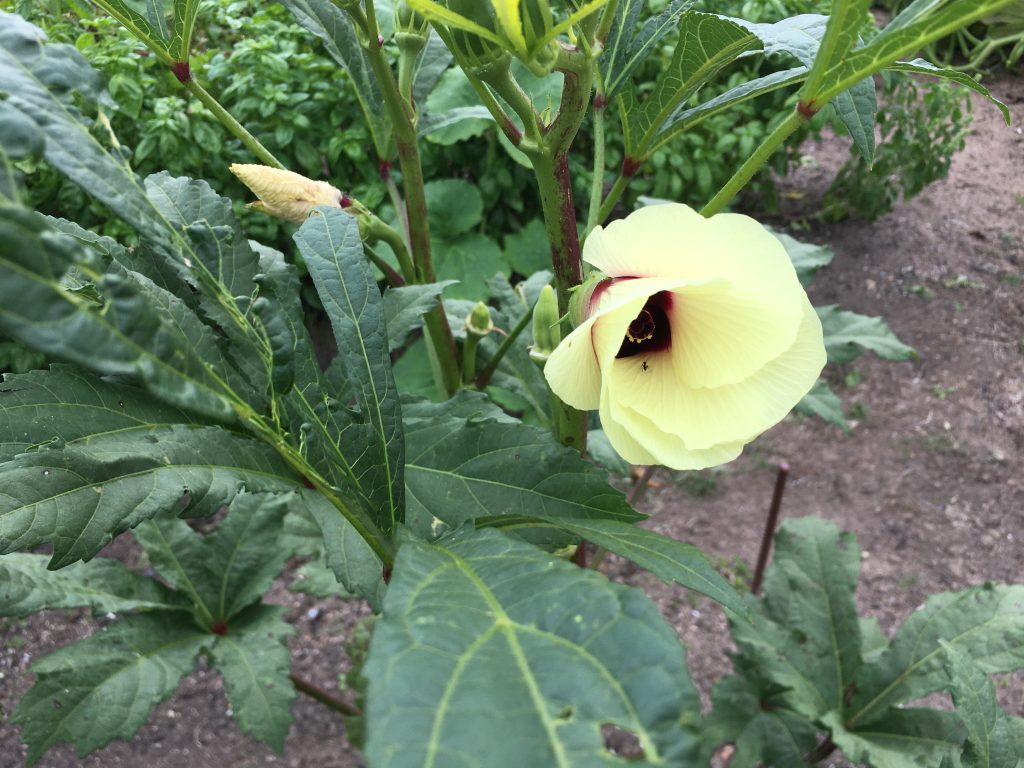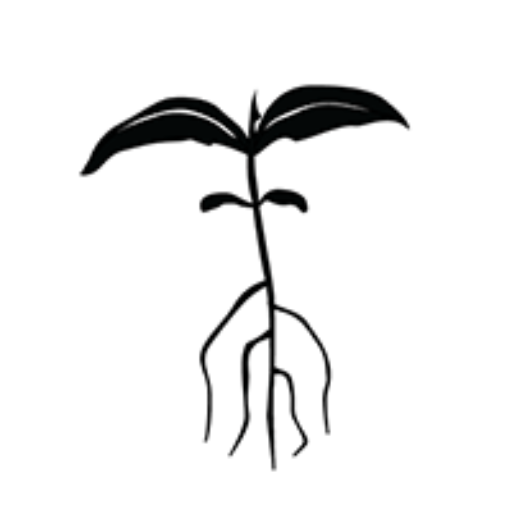Botanical name : Abelmoschus esculentus
Common name : Okra, Lady’s fingers
Intermediate difficulty for seed saving
Lifecycle: Annual
Pollination: Self and Insect pollinated
Mating system: Perfect self-fertile flowers
Suggested spacing: Same as for eating production
Seed specific requirements: None
Isolation distance: 250 m
Population size: 5 or more plants. A single plant will produce viable seed.
Seed maturity: When the pods have turned brown and dried
Processing method: Dry threshing and sieving
Expected seed viability: 1 to 5 years
Images

Growing for seed
While not requiring cross pollination, okra can be cross-pollinated by insects so should be isolated by at least 250 m from other okra varieties. If the isolation distance can be achieved, then growing for seed is straightforward. If isolation cannot be achieved by distance, then techniques to exclude insects can easily be used as okra will happily self-pollinate. Plants can be caged or individual flowers can be enclosed in blossom bags until after pollination has taken place.
Okra needs warm conditions. It does well in tropical and sub-tropical areas. More southern gardener may need to find appropriate microclimates to get good results with okra. It is not an ideal crop for locations south of Perth or Sydney.
Growing to seed is the same as growing for eating except that the pods are left well past the eating stage. This means that a fairly long warm growing season is required to ensure the seed can mature before the end of the season.
Selection
Okra varieties have pods with different forms and colours. Seed production plants should be selected to best represent the desired traits for that variety.
Harvest
The seed will be mature when the pods have turned brown and dried. They can be individually harvested by hand. Pods will mature at different times so growers will need to harvest multiple times starting with pods towards the bottom of the plant.
Processing
Pods may take several weeks after harvesting to dry enough for processing. They can be hung in a mesh bag or spread on a screen or tarp.
Pods may split somewhat when drying which makes processing a bit easier. If they don’t split then cutting off the stem end can help seeds to fall out. Seeds may need to be loosened from inside the pods by rolling the pods between hands or by walking on them.
The fine hairs on the pods may cause skin irritation so gloves are recommended when processing mature okra for seed.
Contributors
Liz Worth, Nellie Pryke
